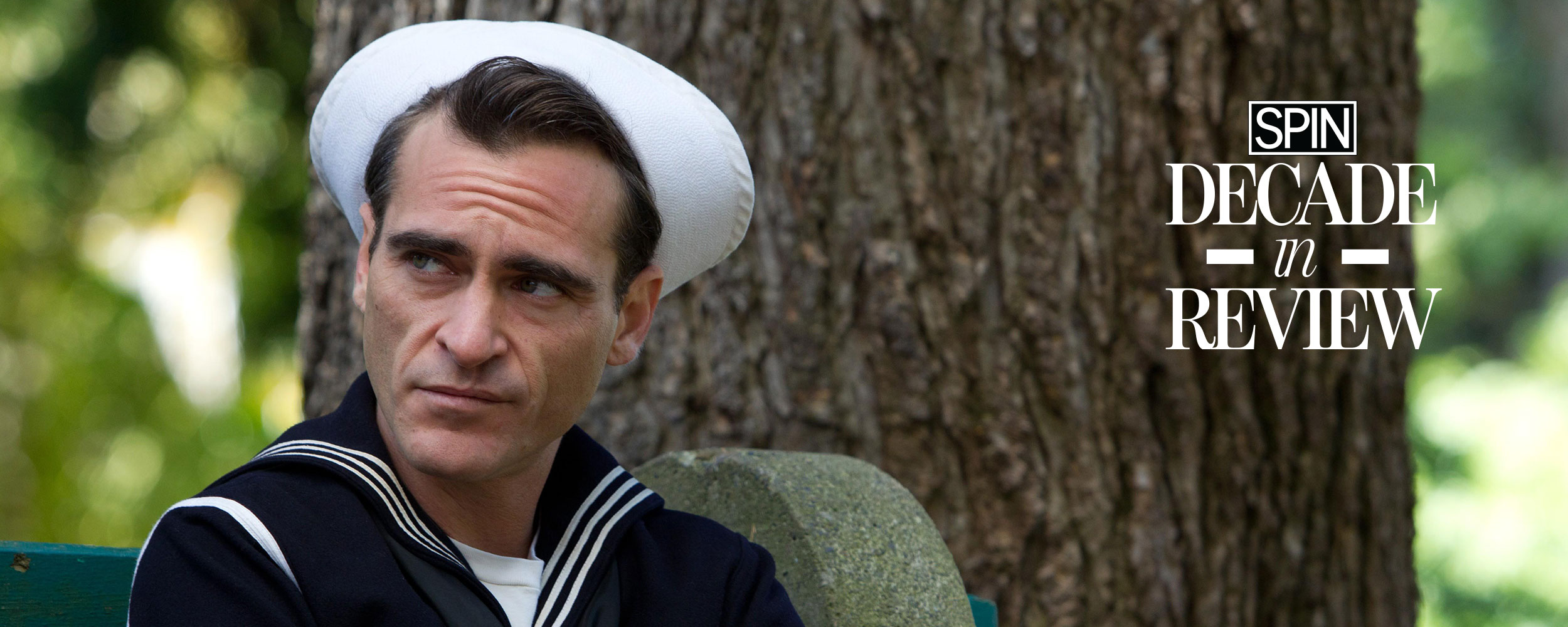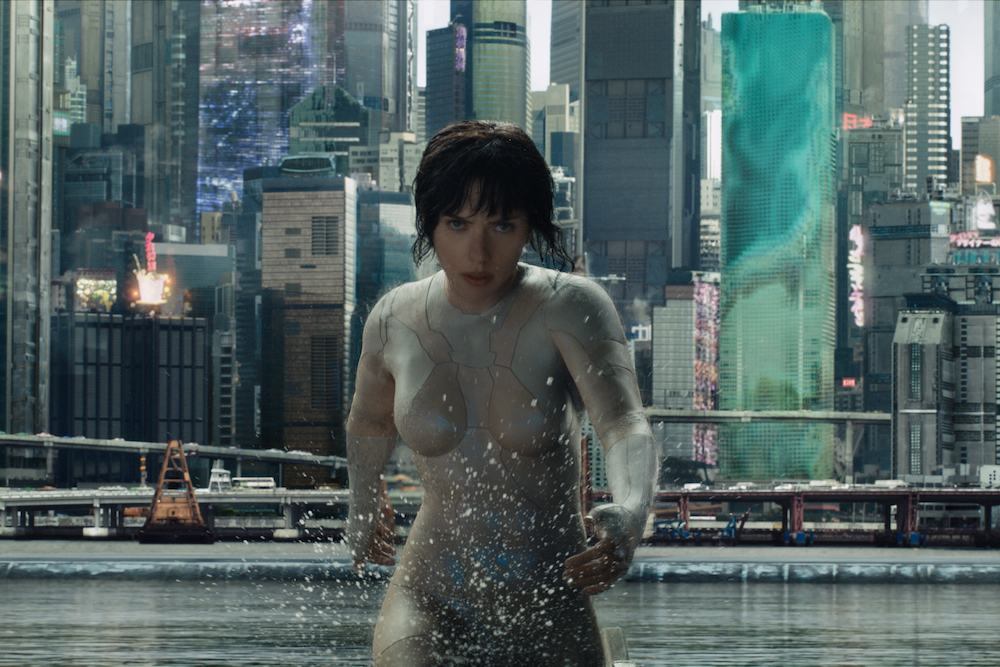“Whitewashing” was already a buzz topic, but the irrefutable proof that the new Ghost in the Shell was a mortally doomed effort came in a minute-long teaser from early March. The few seconds were soundtracked by Kenji Kawaii’s “Making of a Cyborg,” which scored the 1995 anime film’s opening credits sequence, and was essential to its foreboding tone. As some promotional text declared that theme “iconic,” it abruptly transitioned to the 2017 version: a dissonant Steve Aoki remix that sounds like a Windows soundboard malfunction.
As a metaphor for the disconnect between the movie’s producers and the lauded source material, the teaser didn’t require much explication. More than offensive or cringe-worthy, it was just kind of… lame, $110 million going into a philistinic “isn’t this cool” grasp for relevance, the filmic equivalent of one of those mass-produced anime-themed shirts for sale by the rack at Uniqlo. Turning Ghost in the Shell into a commercial giant might’ve always been a lost cause; while influential, the content was possibly too philosophically wrought to translate into a Hollywood hit. But in the attempt to retrofit its frame for modern relevance, they were taking the corniest route possible.
The build toward the reality of Scarlett Johansson, a white woman, playing a Japanese cyborg has been a long one. By the time the first images of Johansson as the Major made its way online last April, we’d already seen Emma Stone play a part-Asian character and knew Matt Damon would play the benevolent white hero in The Great Wall. In a Hollywood context, whitewashing has heavily implied that you can only sell a studio blockbuster only if it’s white enough. Since those Johansson photos leaked, however, a black LGBT-themed film won Best Picture and Jordan Peele became the first black director to rake in $100 million with his debut film. The conventional wisdom succumbed to obvious examples of success, and within months, Ghost in the Shell’s politics went from wrongheaded to plainly archaic.
Live-action Ghost borrows the original anime’s futuristic look, but takes a number of liberties for its plot. The 1995 Major is a meditative but assured cyborg tasked with investigating a master hacker. In the remake, Johansson’s Major has her body replaced by an artificial one without her consent and also gets tasked with tracking down a cybercriminal. As she untangles the case, she eventually has to double back to find out what happened to her human flesh.

Also Read
30 Great Movies That Defined the 2010s
Two decades ago, the original Ghost’s solipsistic ruminations—”what is a human?” was its core question—felt potent, as they were woven with what was a relatively novel, defined construct: the so-called human soul encased in a machine. While Ghost wasn’t the first property to explore the concept, it was a notable high mark. In the time since, the concept has been recycled multiple times—most notably with 1999’s The Matrix—and when the new Ghost has nothing interesting to add, it becomes awkwardly obvious.
Here, humanity is examined through limply delivered platitudes. In one instance, after the Major gets her new body at the film’s start, a doctor protests to the film’s antagonist that he’s “reducing a complex human into a machine” with the conviction of a high schooler explaining existentialism in a Dostoevsky novel. The dense philosophical insights from two decades ago feels reiterative and tangential here—questions of the self exist as cliche-laden fat. The remake is more preoccupied with refashioning several of the ‘95 flick’s defining scenes—rooftop drop, on-foot chase, and spider tank climax—but it hampers them with an ineffective orchestral score and a weakly developed supporting cast. They also appear as conventional, low-stake rehashes—a fatal flaw for a film that’s struggled to justify its own existence.
Paramount Pictures is probably going to spend some time finding the raison d’être for 2017 Ghost in the Shell, too. The film finished third at the box office behind Glengarry Glen Ross for children and another inessential live-action remake (on its third week, mind you), putting it in verge of bombing like the Stone-starring Aloha and The Great Wall. Naturally, Johansson earns the brunt of the blame by virtue of being the leading woman. She’s been carving a lane for herself in sci-fi over the past few years, but all of them are inoffensive compared to her role in Ghost, which attempts to sell worn denim with a Nudies price tag.
Johansson is fine here, at least. She doesn’t quite nail the OG Major’s confidence, but her performance does evoke the disconnect felt in the movie’s name. But that small bit of goodwill gets undone when it’s revealed during the film’s final third that before the Major—whose given name in this rendition is Mira Killian—got her body stolen, she was known as Motoko Kusanagi and had a Japanese birth mother. Up until this revelation, one of the only defenses for Johansson’s casting was the idea that cyborgs don’t have ethnicities—even the original’s director Mamoru Oshii cited this loophole, in response to the criticisms. But this scene confirms Johansson is essentially playing an Asian woman, and the birth name’s nod to the original character quickly rings cynical.
The producers were willing to contort an entire mythos to fit into a white-centric perspective, in other words. That willingness to manipulate the source’s elements piecemeal to mold with Western tropes, instead of engaging with its ideas, may ultimately explain why there’s never been a good live-action anime remake. And there’s more tepid rehashes to look forward to: Netflix’s Death Note, based on Tsugumi Ohba and Takeshi Obata’s famed manga, is expected to hit drop on August 25. The lead actor is, again, white, and its prospects look just as dim.




